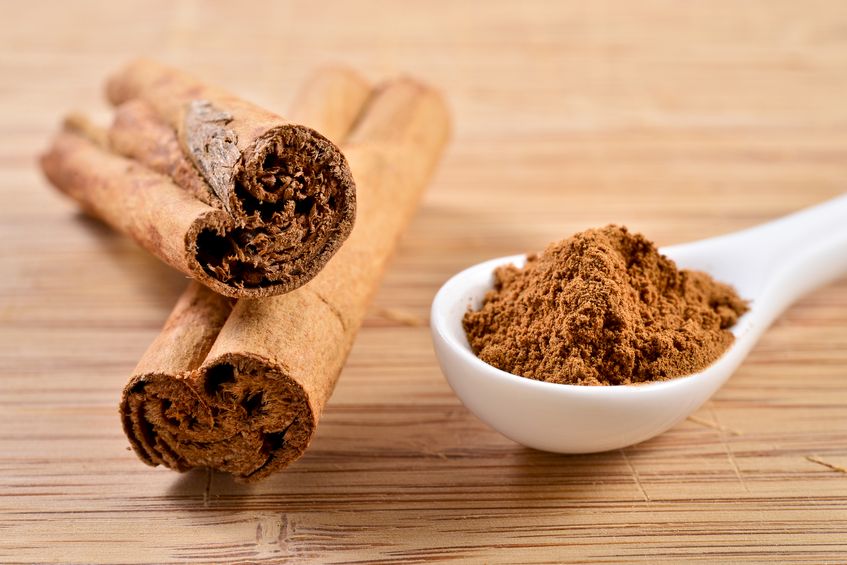The important relationship between diabetes and the gut microbiome

The trends of metabolic disorders, including type 2 diabetes, obesity and cardiovascular disease, have grown at alarming rates in most developed countries. More than 600,000 people die from heart disease each year. Type 2 diabetes remains common as a precursor to cardiovascular disease and its complications.

“Type 2 diabetes is one of the main reasons of death worldwide by 2030“ . Ultimately, this disease results in heart attacks, strokes, cardiac arrhythmias, and heart failure. Similarly, obesity levels could be another reason.
However, current research is pointing to another possible reason for metabolic disorders such as obesity, type 2 diabetes, and heart disease; it all has to do with your gut microbiome.
Table of Contents
How can type 2 diabetes be related to the gut?
The connection between the gut microbiota and energy homeostasis and inflammation and its role in the pathogenesis of obesity-related disorders are increasingly recognized.
People with obesity, type 2 diabetes, and heart disease have a lack of microbial diversity in their stools; The gut microbiome has a limited number of friendly bacteria, but it is overwhelmed with bad bacteria.
This has already been studied before, however, more systemic studies that offer greater information potential are still needed.
Eventually, in the not-too-distant future, you may see “gut-targeted” glucose-lowering treatments that seek to harness the great benefits of improving gut health and how this relates to diabetes. The microbiome will become an essential part of treating these and other common metabolic diseases.
Read on to find out more about this.
What is the gut microbiome?
Bacterial cells live in the skin, nose, mouth, and digestive tract. Your GI tract contains a collection of microbes called the gut microbiome. This includes bacteria, fungi, viruses, and parasites. Due to the high amounts of acid in the stomach, these organisms generally exist only in the large intestine or colon.
Friendly gut bacteria try to keep bad bacteria in check; they constantly multiply to leave less room for the bad ones. Good bacteria play a role in the production of vitamins, neurotransmitters like serotonin, and constantly improve the immune system.
This set of microbes varies from person to person and there is no real consensus on what makes the “perfect human microbiome.” The microbiome is really the study of “The genetics of bacteria.” Your specific biome might work just fine for you and no one else.
So, understanding the microbiome can provide answers for conditions ranging from obesity to type 2 diabetes to cardiovascular disease. It has even been associated with type 1 diabetes.
What does an adult have in his microbiome?
A healthy adult harbor between 500-1000 bacterial species or 2 kilos of microbes in the gut. We have 39 trillion bacteria in the human body, that is, we are more microbes than cells.
Additionally, the breakdown consists of approximately 23% Bacteroidetes used to process protein and carbohydrates in the gut and 64% Firmicutes which process dietary fat in the gut. There are other types and smaller amounts of germs.
People with diabetes tend to have a change in the balance of their biomes, having fewer Firmicutes and more Bacteroidetes; having germs out of balance can lead to illness. When in the right balance, gut bacteria can regulate hormones, synthesize vitamin K, folic acid, and vitamin B12.
What affects the gut microbiome?
Animal models of obesity connect an altered microbiota composition with the development of obesity, insulin resistance, and diabetes in the host through several mechanisms: increased energy harvesting from the diet, alteration of metabolism and the composition of fatty acids in adipose tissue and liver, intestinal peptide modulation.
- It all starts with your DNA and a process called colonization.
- Coming into the world for vaginal delivery versus cesarean section. Vaginal delivery provides the baby with the germs from the mother while a C-section provides the germs from the hospital.
- Breastfeeding supports the development of the microbiome. Being formula fed changes things.
- The gut biome generally stabilizes by 2-3 years, but is always in flux.
- Antibiotics – especially when taken in early childhood, disrupt the development of the microbiome. Antibiotics kill both good and bad microbes.
- Dietary components – the modern western diet, refined, processed and sugary foods cause a negative change in microbes. A high-fat, red meat diet leads to poor changes in gut microbes; It allows for greater intestinal permeability leading to obesity and insulin resistance.
- Non-steroidal anti-inflammatory drugs (NSAIDs) affect the microbiome.
- Possible negative effects of artificial sweeteners (research is still being done on this topic).
- High levels of physical and mental stress alter the biome.
- Disturbed sleep cycles and disrupted circadian rhythms.
- Antibacterial soaps and hand sanitizers kill good and bad bacteria.
Ultimately, the health of the microbiome is based on genetics, diet, age, environment, lifestyle, and lifetime exposure to antibiotics.
What have we learned?
Several major studies have reported that “dysbiosis” or alteration of the gut microbiome can be a factor in obesity, insulin resistance, and type 2 diabetes. Stress, medications, toxic agents, genetic factors, and age also affect the gut microbiome.
It is also affected by the environment, past and current infections, gastrointestinal surgery, and certain foods. It is known that early in our lives, the development of the microbiome can affect our vulnerability and predisposition to certain diseases later in life.
Our microbiome is constantly changing as we are exposed to different factors throughout our lives. We also know that probiotics could be very helpful, but that each person will respond differently to the probiotic.
Some microbes form toxins and enter the intestine. A bad gut biome can lead to leaky gut, intestinal inflammation, decreased insulin sensitivity, and a change in metabolism.
Less variety and diversity in gut bacteria can also lead to ulcerative colitis, Crohn’s disease, IBS inflammatory bowel disease, colon cancer, food allergies, arthritis, migraines, and NASH-liver disease.
Strong yeast formation and bad bacteria in the gut can lead to skin diseases, vaginal and urinary tract infections, and colds. Having a beneficial diversity of the gut biome helps maintain gut integrity.
For example, it provides protection against pathogens and improves the immune system to be able to fight diseases. In addition, it helps you metabolize your medications properly and digest and absorb complex foods, obtaining all the nutrients and energy from them.
What about probiotics?
As stated above, probiotics appear to be beneficial to the microbiome, but not all probiotics work the same way for everyone. Different strains of probiotics treat different health problems. At this point, there is no specific recommended daily intake for probiotics.
There are systemic studies, but they still lack definitive information. The facts we already know include: probiotics are live microorganisms that can offer health benefits. They seem to eliminate diarrhea caused by the use of antibiotics.
They are also given to improve constipation problems, instead of stool softeners and laxatives.
What can probiotics do for diabetes?
- They can modulate or change blood sugar levels and insulin levels.
- They decrease systemic inflammation: Inflammation promotes insulin resistance, which is how type 2 diabetes starts.
- They reduce the levels of C-reactive protein (CRP) that indicate inflammation.
- They decrease stress on pancreatic cells and stimulate the immune system.
- They can help in weight loss.
- They improve heart health.
- Improve mental health: depression, poor memory and anxiety.
Also, probiotics have enough bacteria that they survive food processing. Probiotics include plain yogurt with live cultures (bifido-bacteria and lactobacilli) and certain aged cheeses (gouda, mozzarella, brie, feta, gruyere, cheddar, and cottage cheese).
Fermented foods are great for getting friendly bacteria. The fermentation process creates lactic acid; This helps preserve food and promotes the production of beneficial enzymes, Omega 3 fatty acids, and friendly bacteria. Simply put, the process transforms certain foods into something totally different.
Some examples of this would-be converting milk to buttermilk, soybeans to miso and tempeh, cucumbers to pickles, and cabbage to sauerkraut. Other fermented foods include sourdough bread, kefir, kombucha (tea drink), and kimchi (Korean cabbage). Pickled gherkins and pickled onions are also fermented and very beneficial for the intestine.
If you decide to start taking a probiotic supplement, always consult your doctor first. Choose one with multiple strains, at least 10-30 billion CFU (colony forming units). Make sure it is verified.
And the prebiotics?
Prebiotics are natural plant fibers that the intestinal tract does not digest. They are also a food source for the bacteria that live in your colon. Prebiotics are generally found in fruits and vegetables. They also help the body grow friendly bacteria in the gut and aid in the absorption of calcium.
Prebiotics improve your metabolic health. Some excellent food sources of prebiotics include bananas, garlic, onion, soybeans, peas, Jerusalem artichokes, jicama, soy sauce, chicory root (inulin), asparagus, oats, apples, flax seeds, leeks, dandelions, whole wheat foods and wheat bran.
Possible dietary aspects to take into account if you have diabetes.
Many people with diabetes try to eliminate carbohydrates completely or follow an extremely low-carbohydrate diet, as they affect blood sugar. This often leads to a diet rich in animal fats. Unfortunately, this diet limits dietary fiber, which is crucial for intestinal function and the growth of friendly bacteria.
Consider eating more fiber, as it reduces your appetite by making you feel full, prevents spikes in blood sugar, and is good against insulin resistance.
High-fiber carbohydrates also help produce friendly bacteria. People with diabetes often have “dysbiosis,” an overgrowth of bad bacteria.
Possible ways to improve gut health even if you don’t have diabetes.
- Eat a plant-based diet. Having a high fiber/low saturated fat diet helps provide intestinal diversification. Indigestible carbohydrates stimulate the growth of friendly bacteria.
- Eat nutrient-dense foods and buy organic produce whenever possible, including grass-fed meats, wild fish and eggs from free-range chickens.
- Add high-fiber foods: legumes, nuts, seeds, berries, and low-starch vegetables.
- Eat foods rich in Omega 3 such as wild salmon, ground flax seeds, or walnuts to decrease inflammation.
- Go outdoors: go to the field, to a camp, to your garden; Any outdoor activity can diversify gut health.
- Stop smoking.
- Avoid refined and simple sugars. Avoid processed foods with a long shelf life.
- If you really have a food sensitivity, avoid gluten and dairy.
- Get a good night’s sleep, reduce your stress levels and get more physical activity.
- Metformin – an often-prescribed diabetes pill has “therapeutic effects” on the microbial makeup.
- Polyphenols – foods rich in polyphenols: Green tea, berries, grapes, olive oil, coffee, and wine can diversify the gut microbiome.
- Wash your hands with normal soap and water, avoid hand sanitizers.
Yes, there is a connection between diabetes and your current intestinal flora. More studies are still needed targeting the gut, type 2 diabetes and its treatment.
There is still a lot to prove and more research needs to be done, but we know there are many strong connections.


